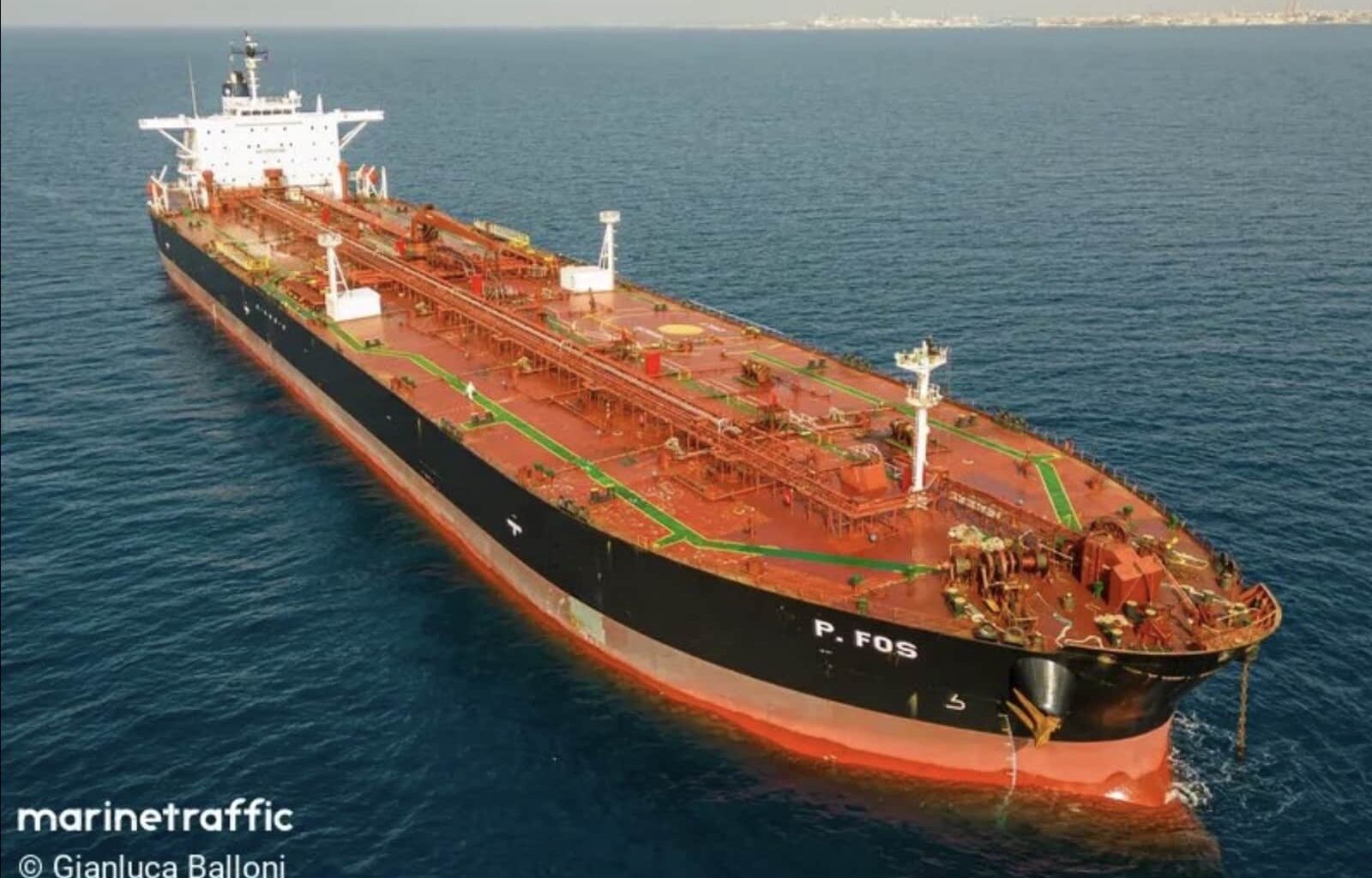French military forces boarded a Russia-linked oil tanker suspected of serving as a launchpad for mystery drones that forced the closure of Danish airports last month. Two crew members claiming to be the ship’s captain and first mate were taken into custody Wednesday, according to The Guardian.
The dramatic seizure marks the first time a NATO country has intercepted a vessel from Russia’s “shadow fleet” over suspected drone operations targeting civilian infrastructure.
Shadow Fleet Tanker Intercepted En Route to India
The Boracay, a 244-meter (801-foot) Benin-flagged tanker, was carrying 750,000 barrels of crude oil from Primorsk near St. Petersburg, Russia to Vadinar, India when French naval forces intercepted it Sunday. The vessel was diverted to Saint-Nazaire in western France for investigation.
Brest prosecutor Stéphane Kellenberger told France 24 the preliminary investigation focuses on “failure to provide proof of the vessel’s nationality” and “refusal to comply” with instructions. Maximum penalties include one year in prison and a €150,000 ($175,000 USD) fine.
The tanker has repeatedly changed identities, previously sailing as Pushpa, Kiwala, and Varuna. Ship tracking data shows it operated near Danish waters during the September 22 and 24 drone sightings that shut down Copenhagen and Aalborg airports.
Connection to Airport Closures Under Investigation
Copenhagen Airport closed for four hours on September 22 after two to three large drones entered controlled airspace. Danish police Chief Superintendent Jens Jespersen described the operator as a “capable actor” with “the capabilities, the will and the tools to show off in this way.”
Aalborg Airport, which hosts a Danish military air base, was closed twice on September 24-25 after additional drone sightings. Multiple smaller airports also reported unauthorized drone activity during the same period.
French President Emmanuel Macron said “there were some very serious offences committed by this crew” but stopped short of confirming a link between the Boracay and the Danish drone incidents.
Danish media identified three vessels with Russian links operating near Denmark during the incidents: the Boracay (then named Pushpa), the Astrol-1, and the Oslo Carrier-3. A Russian warship, the Aleksandr Shabalin, was also filmed by Danish media near Langeland in the Baltic.
EU Leaders Meet on “Drone Wall” Defense Strategy
The boarding comes as Copenhagen hosts an EU summit where leaders are discussing development of a “drone wall” to counter hybrid warfare threats. Danish Prime Minister Mette Frederiksen described the September incidents as part of a “hybrid war,” saying “from a European perspective, there is only one country that is willing to threaten us, and it is Russia.”
The Kremlin denied involvement and said it had no information about the tanker or the incidents.
The Boracay is subject to UK and EU sanctions. In October 2024, the UK identified the vessel, then called Varuna, as part of Russia’s shadow fleet involved in “carrying oil or oil products that originated in Russia to a third country.”
The shadow fleet consists of aging vessels with obscure ownership operating without Western-regulated insurance to help Russia circumvent oil export sanctions imposed after its 2022 invasion of Ukraine. Macron estimated the shadow fleet includes “between 600 and 1,000 ships” representing “tens of billions of euros of Russia’s budget” and making up “40% of the Russian war effort.”
DroneXL’s Take
The French seizure of the Boracay represents a major escalation in Europe’s response to drone-enabled hybrid warfare. We’ve been tracking the Denmark incidents closely since Copenhagen Airport first closed on September 22, and the pattern of coordinated drone activity across multiple airports pointed to state-level capabilities rather than hobbyist operations.
The theory that large fixed-wing drones were launched from ships near Danish waters makes operational sense. Ships provide mobile launch platforms that can operate in international waters, making attribution difficult and giving hostile actors plausible deniability. The Boracay’s history of changing identities and operating as part of Russia’s shadow fleet fits this profile perfectly.
What’s particularly significant is that this marks the first time a NATO country has physically intercepted and boarded a vessel suspected of drone operations against civilian infrastructure. It’s a strong signal that European nations are moving beyond surveillance and diplomatic protests to direct action. Whether this deters future hybrid warfare operations or escalates tensions in the Baltic remains to be seen. The EU’s planned “drone wall” and NATO’s enhanced Baltic Sea presence suggest allies are preparing for a long game of drone cat-and-mouse.
What do you think? Share your thoughts in the comments below.
Discover more from DroneXL.co
Subscribe to get the latest posts sent to your email.
